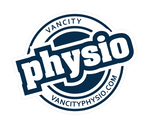Sciatica commonly presents as low back pain that travels down one leg, with or without nerve type pain and associated weakness. It is caused by injury or compression to the sciatic nerve. The sciatic nerve is the largest and longest nerve in the body, and its roots run from L4 to S3, starting in the lower back, running down the back of each thigh, splitting behind the knee, traveling into the underside of each foot. It supplies the muscles and skin of where it passes.
To understand sciatic type pain, first we need to understand what nerve pain is and its classic signs and symptoms. Nerve type pain can be described as “paresthesia”, which can be the feeling of burning or prickling, numbness, tingling and/or sometimes itching. It is often quite an uncomfortable sensation! Some individuals with sciatic type pain experience this paresthesia in their leg that’s affected. Depending on which level the sciatic nerve is compressed or irritated, this will determine where the person may feel the pain, tingling and/ or numbness. This could be in the back of their thigh, in their foot, and/ or toes. The person may also feel weakness in their limb, which may be described as feeling their leg is tired or heavy.
But why does this type of pain happen with sciatica?
There are 2 causes of sciatic type pain: spinal and non-spinal. Spinal causes are related to your spine – go figure! Spinal causes can be from poor body mechanics or posture, trauma, and/or strong twisting movements.
The most common spinal cause is a disc herniation or bulge. Discs are like jelly donuts in between each of your vertebrae (bones that make up your spine) and if they are compressed, they can irritate the nerve at that level. Non-spinal causes occur outside the spinal region, and cause compression or irritation of the sciatic nerve itself, along its pathway. Regardless the cause – the good news is sciatic pain often resolves over time. Physiotherapy can help to diagnose and treat sciatica, with the appropriate education, manual therapy, exercise prescription, and self-management techniques.
Book a consultation today: https://vancityphysio.janeapp.com/
Follow us on Instagram for more information: VanCity Physio (@vancityphysiotherapy)


